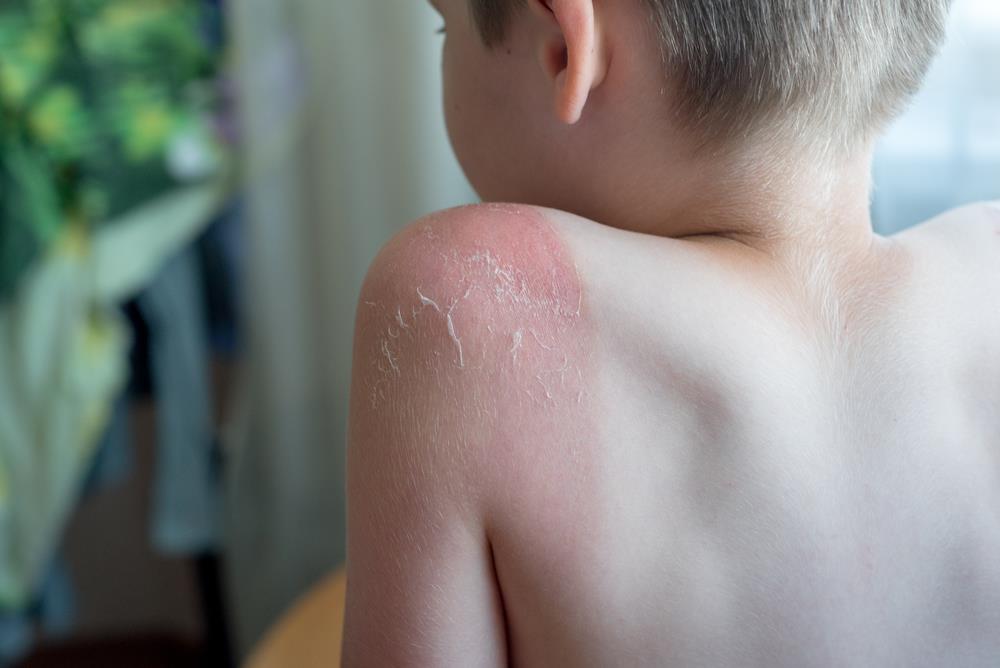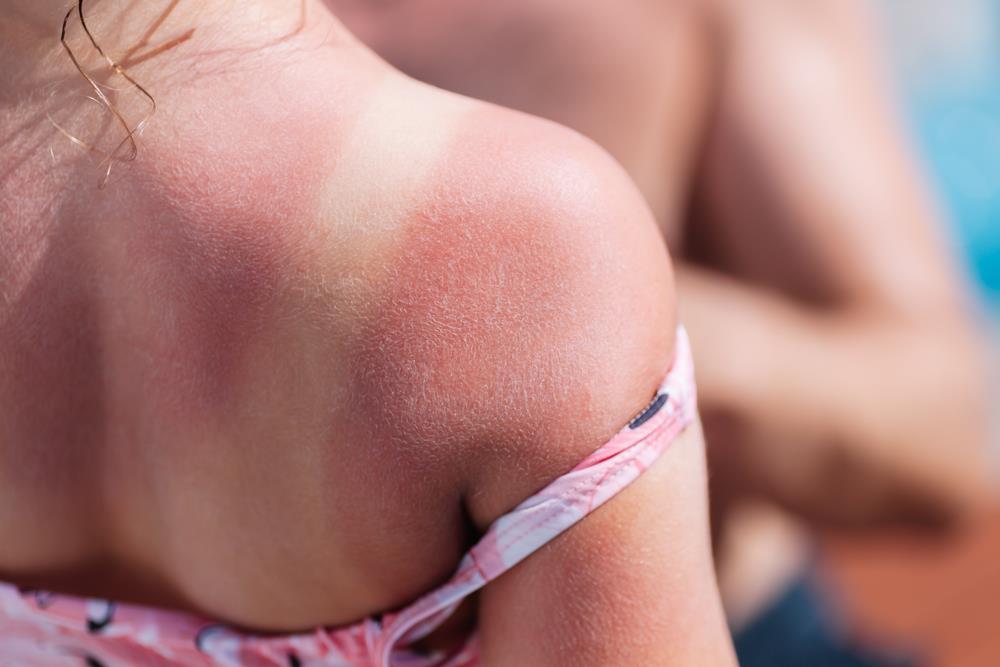How to Treat Your Child’s Sunburn
We have entered the dog days of summer and it is hot, hot, hot here in North Texas! Many of us are spending time with our children in the pool, at waterparks, or in local lakes. Even those who religiously apply sunscreen may miss a spot or fail to reapply within the necessary timeframe to preserve effectiveness, and our child may experience a sunburn. We’ll discuss how to relieve your child’s discomfort when fun in the sun has an unexpected side effect!

How to treat sunburn in kids
Sunburns are a type of radiation burn that causes damage to the skin cells. It’s common to have inflammation and reddening that will usually lead to peeling or in some cases, blisters, which indicates the suburn is more serious. Sunburn blisters do not appear on the skin right away, but generally hours later after the burn has settled into the skin. Sunburned skin will feel hot, tender, and sting a bit.
First-degree sunburns
Sunburns are never any fun. A first-degree sunburn is the most common type of sunburn. The level of sunburn damages the top layer of skin. It presents itself with typical redness and your child may complain that their skin feels hot and/or tight.
Second degree sunburns
These types of burns are often spread out over a large area of skin and involve the epidermis and part of the dermis layer of skin. Your child’s skin will appear red, swollen, and blistered. It will feel painful for them. The blisters indicate that damage to the deeper layers of the skin and nerve endings has occurred. This type of sunburn takes longer to heal. Unfortunately, it also increases the risk of developing skin cancer or melanoma, so it’s important to try and avoid this by applying sunscreen liberally and often.
Third degree sunburn
It’s very rare to get a third-degree sunburn. Most third-degree burns result from a chemical burn or fire.
How to treat your child’s sunburn
First and foremost, find some shade or bring them indoors. A cool bath or shower can help soothe the discomfort of the sunburn. If it is not possible to put your child in a cool bath or shower, a cool, damp towel or cloth can bring them comfort.
Using products that contain aloe vera can be very soothing to sunburned skin. Avoid the use of products containing petroleum, as it can trap heat inside the skin. You’ll also want to avoid products containing benzocaine or lidocaine. While they are designed to soothe the pain of cuts and abrasions, they can irritate sunburned skin.

Be sure to keep your child well-hydrated. Sunburn draws fluid to the skin’s surface. Your child will need to drink lots of water and/or sports drinks to help replace lost body fluids and replenish electrolytes. This helps a sunburn to heal more quickly. Fill a water bottle, and have your child drink from it frequently.
Consider using ibuprofen. It can help ease your child’s discomfort and swelling. If you’re not sure of your child’s dosage, please contact our office.
If your child’s sunburn has blistered, do not attempt to break them. If a blister does break, gently trim off the broken skin remaining with clean scissors. Carefully cleanse the area with mild soap and water, followed by an application of an antibiotic ointment. Cover the wound with a nonstick bandage.
A word about sun poisoning
The term “sun poisoning” refers to a severe case of sunburn. Sun poisoning symptoms can include:
- Dehydration
- Dizziness
- Headache
- Fever and chills
- Nausea
- Pain and tingling
- Skin redness
- Skin blistering
- Swelling
This type of burn inflames your skin due to a strong amount of UV radiation. Because the initial symptoms of skin redness, swelling, and discomfort are similar to a standard, first-degree sunburn, other symptoms may not be noticed. However, sun poisoning can be dangerous, so it is important to be aware of other symptoms which could indicate more serious sun exposure. If your child could be at risk for sun poisoning such as nausea, an upset stomach, dizziness, fever and chills, blisters, or any signs of dehydration, contact our office immediately.
